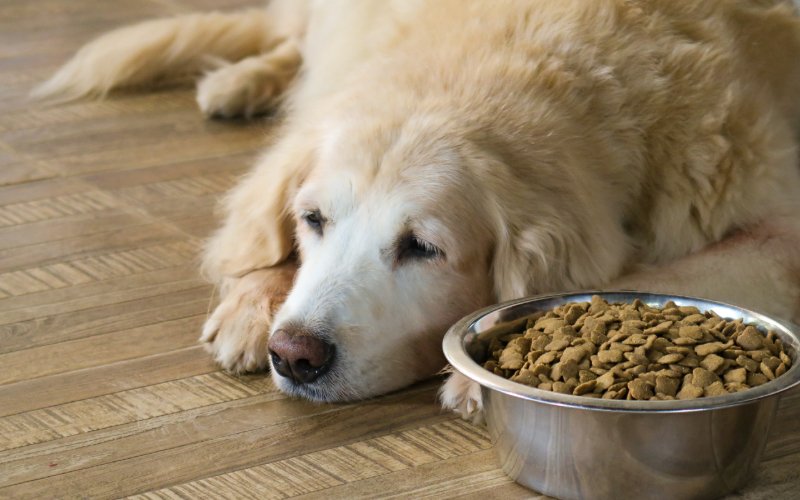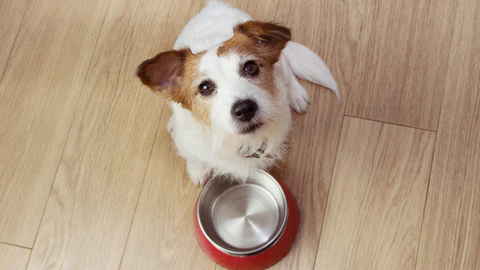How Long Can Your Dog Go Without Food: 2024 Guide
Ever wondered how long your dog go without food before it becomes a serious concern? It’s a question that weighs heavily on the minds of many pet owners. Understanding the nuances of canine dietary needs…
Ever wondered how long your dog go without food before it becomes a serious concern? It’s a question that weighs heavily on the minds of many pet owners. Understanding the nuances of canine dietary needs is crucial, as it can mean the difference between a healthy pet and a medical emergency.
While healthy adult dogs can typically survive three to five days without food, factors like age, size, and health status can significantly alter this timeline. Puppies and small breeds, in particular, are more vulnerable and demand immediate attention if they skip more than a meal or two.
In this text, we’ll investigate into the specifics of canine fasting tolerance, highlighting when it’s time to consult a veterinarian. By the end, you’ll have a clearer understanding of how to ensure your furry friend stays safe and healthy. Join us as we explore the critical balance of nutrition and well-being for our beloved pets.
How Long Can Your Dog Go Without Food?
Understanding how long a dog can go without food is vital for pet owners. Generally, healthy adult dogs can survive without food for 3 to 5 days if they’re well-hydrated.
Factors Affecting Duration
Several factors can influence how long dogs can go without food. Size and breed significantly affect this duration. Smaller breeds like Chihuahuas and Yorkshire Terriers, with their faster metabolisms, can only last about 2 to 3 days without eating. Larger breeds, such as Great Danes, have a slower metabolism and more body mass, allowing them to go up to 5 days. Age also plays a crucial role. Puppies require frequent meals due to their rapid growth and smaller energy reserves. Puppies under eight weeks should not go more than 5 hours without food, while those over two months can typically go 12 hours.
Risks of Prolonged Fasting
Extended fasting has serious risks for dogs, especially those with existing health issues. A dog without food may experience a weakened immune system, risking infections. Prolonged fasting in dogs may also lead to gastrointestinal issues, such as nausea and vomiting. In severe cases, organ failure might occur due to a lack of essential nutrients. It’s important to monitor dogs closely and seek veterinary advice if they refuse food for more than 48 hours to mitigate potential risks.
Reasons Your Dog Isn’t Eating
Understanding why dogs refuse food is vital for their health. Several factors, from medical issues to environmental changes, can affect their eating habits.
Medical Causes
Health problems often lead to decreased appetite in dogs. Illnesses such as gastrointestinal diseases, organ issues, and cancer can suppress their urge to eat. Pain, whether from dental problems like tooth decay or more systemic conditions such as liver or kidney issues, can also deter them. Starting new medications or facing side effects of existing ones may temporarily reduce their appetite. It’s important to monitor these symptoms closely and consult a vet if the appetite loss persists.

Behavioral Reasons
Behavioral issues can influence a dog’s eating patterns. Dogs may stop eating due to stress or anxiety, which can arise from changes in routine or environment. Depression in dogs, similar to humans, may also cause a drop in their interest in food. Besides, some dogs are simply picky eaters. Trying different food options may help identify what suits their taste buds and encourage regular eating habits.
Environmental Changes
Environment plays a critical role in a dog’s eating behavior. A recent move to a new home or changes in their daily routine can cause stress. If we’ve switched dog food or feeding locations, it may take time for them to adjust, leading to temporary appetite loss. Even new pets or family additions create a sense of unease, affecting their eating patterns. Creating a calm and consistent environment helps help their transition back to normal eating routines.
How to Encourage Your Dog to Eat
Improving a dog’s eating habits requires creativity and patience. We can employ several strategies to make meals more appealing and stress-free for our furry companions.
Change the Food Type or Flavor
Altering the food type or flavor can spark interest in picky eaters. Dogs, like humans, enjoy variety. If your dog shows disinterest in their regular meals, consider trying a new type of food or different flavor profiles. Switching between proteins like chicken, beef, or lamb provides variety and can meet nutritional needs. Don’t forget to introduce changes gradually to avoid upsetting their digestive system.
Create a Stress-Free Mealtime
Establishing a serene environment during meals helps dogs focus on eating. A quiet setting with distractions minimized encourages them to enjoy their meal without stress. If multiple pets are present, feed them separately to prevent competition or anxiety. Keep mealtimes calm and free from chaos to ensure dogs can concentrate on their food.
Introduce Routine and Consistency
Consistency in feeding schedules helps regulate appetite and builds anticipation. By offering meals at the same times each day, dogs learn to expect and prepare for their meals, which optimizes digestion and minimizes uneaten portions. Include regular meal routines even on weekends to maintain their biological clocks. This routine establishes a sense of security and helps bring back their natural feeding instincts.
When to Contact Your Veterinarian
If a dog stops eating for 48 hours, it’s crucial to consult a veterinarian. Timely intervention helps identify and treat underlying issues.
Warning Signs to Watch
Monitor for additional symptoms along with loss of appetite. Look for lethargy, vomiting, diarrhea, or changes in behavior. These could indicate serious health problems such as infections or organ dysfunction. Seek veterinary advice promptly if these symptoms occur, especially if they persist beyond 48 hours.
Puppies and small breeds, including Chihuahuas and Yorkshire Terriers, present exact concerns. Their faster metabolisms can lead to severe complications more quickly. Immediate veterinary consultation is advised if they stop eating for an extended period.
Behavioral changes may also signal distress. Observe any signs of stress or anxiety, which could affect appetite. A vet can help determine whether the issue is medical or behavioral, ensuring appropriate treatment.
Regular check-ups and consultations with veterinarians ensure swift response to any concerning changes. Creating a proactive plan with veterinary professionals can alleviate potential health risks associated with prolonged fasting in dogs.
Conclusion
Understanding how long our dogs can go without food is crucial for their health and safety. While various factors like breed, age, and health conditions affect this duration, it’s essential to monitor their eating habits closely. If our dogs refuse food for more than 48 hours, consulting a veterinarian is vital to address potential issues. By creating a stress-free mealtime environment and offering diverse food options, we can encourage healthier eating habits. Let’s stay vigilant and proactive in ensuring our furry friends’ well-being.

